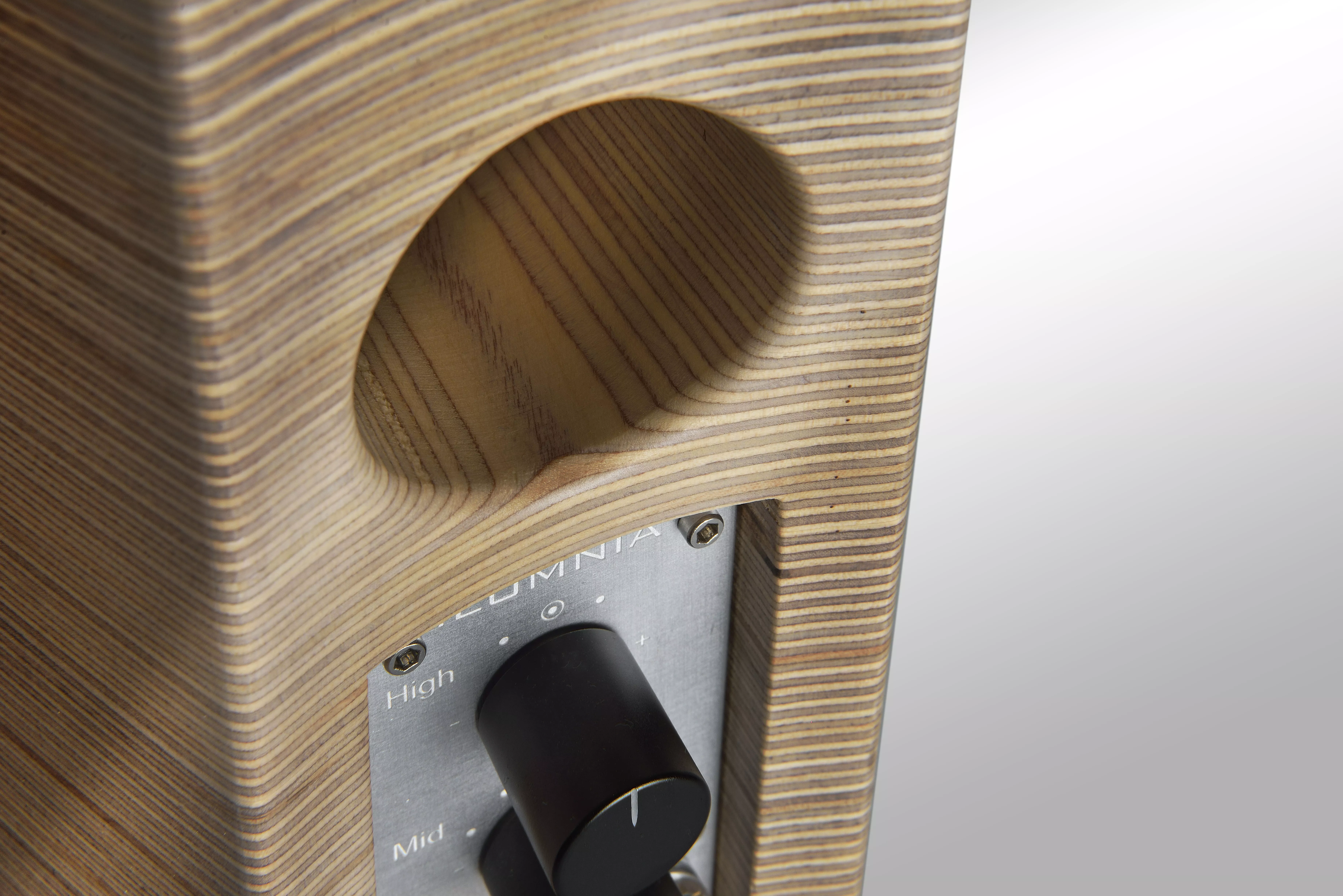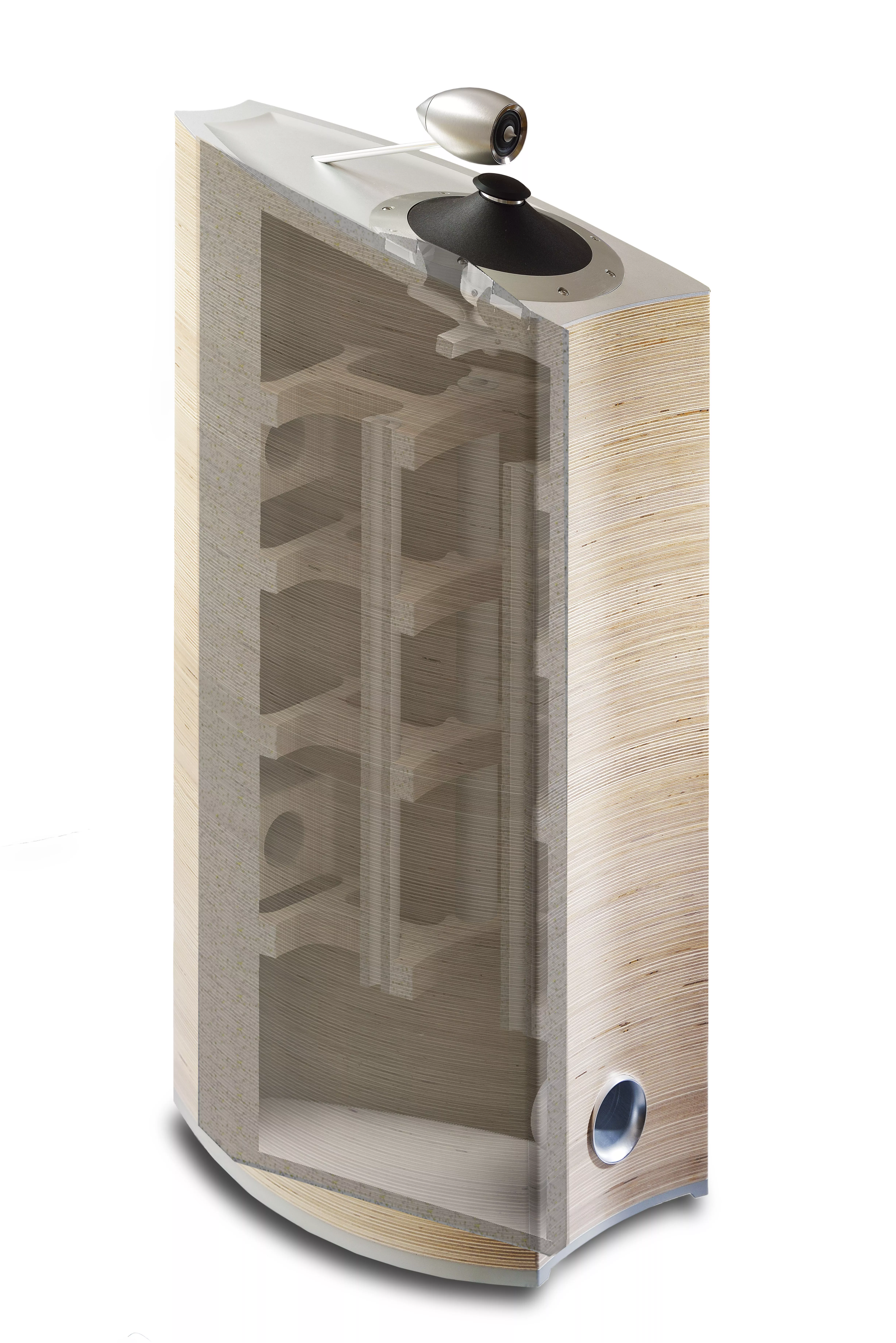By using different bass reflex ports and placing the supplied sponges, you can (partially) close the bass reflex ports so you are in full control of the amount of bass your speaker produces.
Adjustable bass tuning
The Ilumnia Magister MK2 has 1 bass port on the front and 2 on the back. Why not 1 or 2 but 3? If one uses the front port, room modes will be less adressed compared to the rear port. This is usefull in small rooms or placement close to the wall.
The difference between the two rear ports is mostly mid-low energy. The top port produces more mid to low energy and less sub-low energy.
It is also possible to combine 2 ports together for bigger rooms which will make the speaker highly tunable.

1 PORT Tuning
Unfortunately, a perfect general fine-tuning of the ports of a loudspeaker does not exist because this also depends on the room in which the loudspeaker will be placed.
With the Magister the perfect tuning is theoretically 37Hz in a perfect room.
How do you get this adjustment? When using ONLY one port. Which one depends on the room.
2 PORTS Adjustment
In larger rooms it is sometimes advisable to tune slightly higher in frequency to better fill the room (Q is higher). In that case you can open two ports, for example both rear ports or the front and the rear at the bottom.
The tuning frequency in this case is the sum of both ports and will be the same for both ports. This effect is therefore identical to shortening one port as the Vocalis.
WHY 3 PORTS ?
It's more complicated (to understand and tune) and more expensive to make, but you have even more control and freedom in tuning due to the multiple possible combinations .
Examples:
1. The Magister is relatively close to the front wall:
You can close the rear ports and use only the front ones to use less room gain. Does this have an advantage? Yes: If you were to dampen the rear port (if you only have one bass port) you will get the 40-50Hz right, but you will also dampen anything above that and you don't want that.
This problem does not occur when using the front port.
2. Speaker is far from a wall, e.g. 1/3 of the length of the room:
The room gain is now much less of an issue, you better use the rear ports. Why? Each port allows more than just the tuned frequency through. When using the rear ports, this effect is much less audible and will improve clarity and focus.

Conclusion
3 ports do offer added value, but you have to use them carefully and that is not always easy. Once you know the speaker well, this is a handy tool to adjust the speaker much better to the room. This advantage has often proven itself in practical use with us. Demo's, hotel rooms, bad acoustics of modern houses, etc.